Formula ZnCl2 Density 2.91 g/cm³ | Molar mass 136.286 g/mol | |
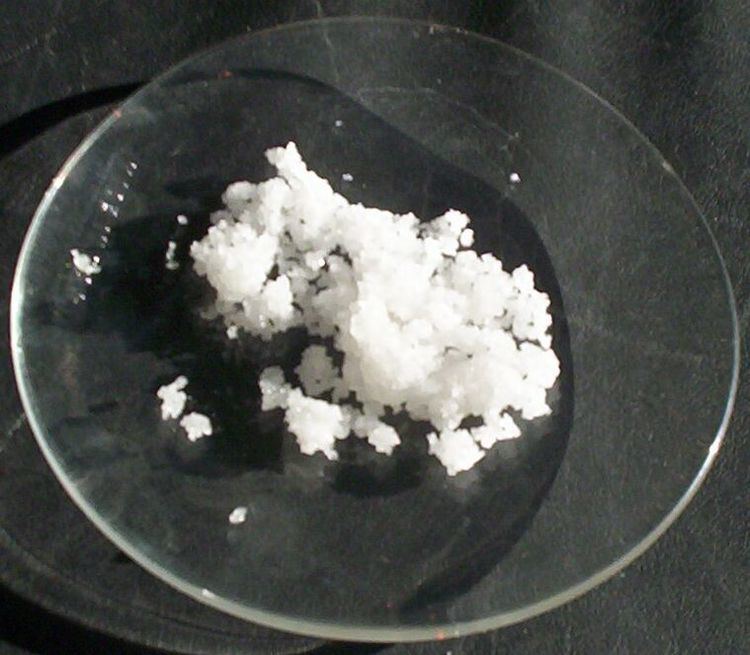 | ||
Appearance white crystalline solidhygroscopic and very deliquescent | ||
Zinc chloride preparation easy
Zinc chloride is the name of chemical compounds with the formula ZnCl2 and its hydrates. Zinc chlorides, of which nine crystalline forms are known, are colorless or white, and are highly soluble in water. ZnCl2 itself is hygroscopic and even deliquescent. Samples should therefore be protected from sources of moisture, including the water vapor present in ambient air. Zinc chloride finds wide application in textile processing, metallurgical fluxes, and chemical synthesis. No mineral with this chemical composition is known aside from the very rare mineral simonkolleite, Zn5(OH)8Cl2·H2O.
Contents
- Zinc chloride preparation easy
- Structure and properties
- Hydrates
- Preparation and purification
- Reactions
- As a metallurgical flux
- In organic synthesis
- In textile and paper processing
- Smoke grenades
- Fingerprint detection
- Disinfectant
- Skin cancer treatment
- Safety
- References

Structure and properties
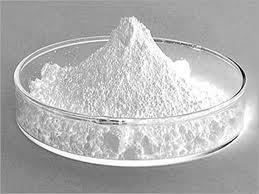
Four crystalline forms (polymorphs) of ZnCl2 are known: α, β, γ, and δ, and in each case the Zn2+ ions are tetrahedrally coordinated to four chloride ions.
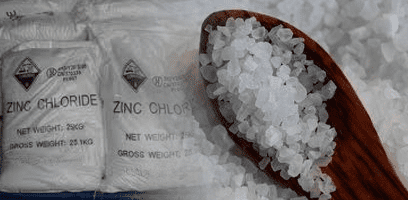
Here, a, b, and c are lattice constants, Z is the number of structure units per unit cell and ρ is the density calculated from the structure parameters.

The pure anhydrous orthorhombic form (δ) rapidly changes to one of the other forms on exposure to the atmosphere and a possible explanation is that the OH− ions originating from the absorbed water facilitate the rearrangement. Rapid cooling of molten ZnCl2 gives a glass.

The covalent character of the anhydrous material is indicated by its relatively low melting point of 275 °C. Further evidence for covalency is provided by the high solubility of the dichloride in ethereal solvents where it forms adducts with the formula ZnCl2L2, where L = ligand such as O(C2H5)2. In the gas phase, ZnCl2 molecules are linear with a bond length of 205 pm.

Molten ZnCl2 has a high viscosity at its melting point and a comparatively low electrical conductivity that increases markedly with temperature. A Raman scattering study of the melt indicated the presence of polymeric structures and a neutron scattering study indicated the presence of tetrahedral {ZnCl4} complexes.
Hydrates
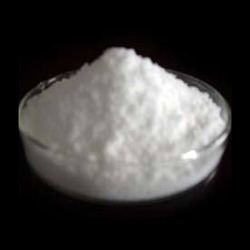
Five hydrates of zinc chloride are known, ZnCl2(H2O)n where n = 1, 1.5, 2.5, 3 and 4. The tetrahydrate ZnCl2(H2O)4 crystallizes from aqueous solutions of zinc chloride.
Preparation and purification
Anhydrous ZnCl2 can be prepared from zinc and hydrogen chloride.
Zn(s) + 2 HCl → ZnCl2 + H2(g)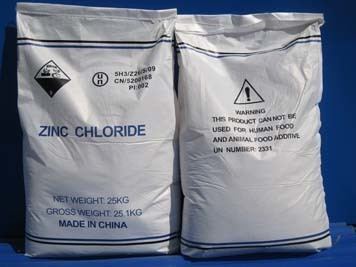
Hydrated forms and aqueous solutions may be readily prepared similarly by treating Zn metal with hydrochloric acid. Zinc oxide and zinc sulfide react with HCl:
ZnS(s) + 2 HCl(aq) → ZnCl2(aq) + H2S(g)Unlike many other elements, zinc essentially exists in only one oxidation state, 2+, which simplifies purification of the chloride.
Commercial samples of zinc chloride typically contain water and products from hydrolysis as impurities. Such samples may be purified by recrystallization from hot dioxane . Anhydrous samples can be purified by sublimation in a stream of hydrogen chloride gas, followed by heating the sublimate to 400 °C in a stream of dry nitrogen gas. Finally, the simplest method relies on treating the zinc chloride with thionyl chloride.
Reactions
Molten anhydrous ZnCl2 at 500–700 °C dissolves zinc metal, and, on rapid cooling of the melt, a yellow diamagnetic glass is formed, which Raman studies indicate contains the Zn2+
2 ion.
A number of salts containing the tetrachlorozincate anion, ZnCl2−
4, are known. "Caulton's reagent," V2Cl3(thf)6Zn2Cl6 is an example of a salt containing Zn2Cl2−
6. The compound Cs3ZnCl5 contains tetrahedral ZnCl2−
4 and Cl− anions. No compounds containing the ZnCl4−
6 ion have been characterized.
Whilst zinc chloride is very soluble in water, solutions cannot be considered to contain simply solvated Zn2+ ions and Cl− ions, ZnClxH2O(4−x) species are also present. Aqueous solutions of ZnCl2 are acidic: a 6 M aqueous solution has a pH of 1. The acidity of aqueous ZnCl2 solutions relative to solutions of other Zn2+ salts is due to the formation of the tetrahedral chloro aqua complexes where the reduction in coordination number from 6 to 4 further reduces the strength of the O-H bonds in the solvated water molecules.
In alkali solution in the presence of OH− ion various zinc hydroxychloride anions are present in solution, e.g.Zn(OH)3Cl2−, Zn(OH)2Cl2−
2, ZnOHCl2−
3, and Zn5(OH)8Cl2·H2O (simonkolleite) precipitates.
When ammonia is bubbled through a solution of zinc chloride the hydroxide does not precipitate, instead compounds containing complexed ammonia (ammines) are produced, Zn(NH3)4Cl2•H2O and on concentration ZnCl2(NH3)2. The former contains the Zn(NH3)62+ ion and the latter is molecular with a distorted tetrahedral geometry. The species in aqueous solution have been investigated and show that Zn(NH3)42+ is the main species present with Zn(NH3)3Cl+ also present at lower NH3:Zn ratio.
Aqueous zinc chloride reacts with zinc oxide to form an amorphous cement that was first investigated in the 1855 by Stanislas Sorel. Sorel later went on to investigate the related magnesium oxychloride cement, which bears his name.
When hydrated zinc chloride is heated, one obtains a residue of Zn(OH)Cl e.g.
ZnCl2•2H2O → ZnCl(OH) + HCl + H2OThe compound ZnCl2·½HCl·H2O may be prepared by careful precipitation from a solution of ZnCl2 acidified with HCl and it contains a polymeric anion (Zn2Cl5 −)n with balancing monohydrated hydronium ions, H5O2+ ions.
The formation of highly reactive anhydrous HCl gas formed when zinc chloride hydrates are heated is the basis of qualitative inorganic spot tests.
The use of zinc chloride as a flux, sometimes in a mixture with ammonium chloride (see also Zinc ammonium chloride), involves the production of HCl and its subsequent reaction with surface oxides. Zinc chloride forms two salts with ammonium chloride, (NH4)ZnCl4 and (NH4)3ClZnCl4, which decompose on heating liberating HCl just as zinc chloride hydrate does. The action of zinc chloride/ammonium chloride fluxes, for example, in the hot dip galvanizing process produces H2 gas and ammonia fumes.
Cellulose dissolves in aqueous solutions of ZnCl2 and zinc-cellulose complexes have been detected. Cellulose also dissolves in molten ZnCl2 hydrate and carboxylation and acetylation performed on the cellulose polymer.
Thus, although many zinc salts have different formulas and different crystal structures, these salts behave very similarly in aqueous solution. For example, solutions prepared from any of the polymorphs of ZnCl2 as well as other halides (bromide, iodide) and the sulfate can often be used interchangeably for the preparation of other zinc compounds. Illustrative is the preparation of zinc carbonate:
ZnCl2(aq) + Na2CO3(aq) → ZnCO3(s) + 2 NaCl(aq)As a metallurgical flux
Zinc chloride has the ability to react with metal oxides (MO) to give derivatives of the formula MZnOCl2. This reaction is relevant to the utility of ZnCl2 solution as a flux for soldering — it dissolves oxide coatings exposing the clean metal surface. Fluxes with ZnCl2 as an active ingredient are sometimes called "tinner's fluid". Typically this flux was prepared by dissolving zinc foil in dilute hydrochloric acid until the liquid ceased to evolve hydrogen; for this reason, such flux was once known as "killed spirits". Because of its corrosive nature, this flux is not suitable for situations where any residue cannot be cleaned away, such as electronic work. This property also leads to its use in the manufacture of magnesia cements for dental fillings and certain mouthwashes as an active ingredient.
In organic synthesis
An early use of zinc chloride (Silzic) was in building carbon skeletons by condensation of methanol molecules. Unsaturated hydrocarbons are the major products, with reaction conditions influencing the distribution of products, though some aromatic compounds were formed. In 1880, it was found that molten zinc chloride catalyses an aromatization reaction generating hexamethylbenzene. At the melting point of ZnCl2 (283 °C), the reaction has a ΔG of −1090 kJ mol−1 and can be idealised as:
15 CH3OH → C
6(CH
3)
6 + 3 CH
4 + 15 H
2O
The discoverers of this reaction rationalized it as involving condensation of methylene units followed by complete Friedel-Crafts methylation of the resulting benzene ring with chloromethane generated in situ. Such an alkylation transformation is an application of zinc chloride's moderate strength as a Lewis acid, which is its principal role in laboratory synthesis. Other examples include catalyzing (A) the Fischer indole synthesis, and also (B) Friedel-Crafts acylation reactions involving activated aromatic rings
Related to the latter is the classical preparation of the dye fluorescein from phthalic anhydride and resorcinol, which involves a Friedel-Crafts acylation. This transformation has in fact been accomplished using even the hydrated ZnCl2 sample shown in the picture above.
Hydrochloric acid alone reacts poorly with primary alcohols and secondary alcohols, but a combination of HCl with ZnCl2 (known together as the "Lucas reagent") is effective for the preparation of alkyl chlorides. Typical reactions are conducted at 130 °C. This reaction probably proceeds via an SN2 mechanism with primary alcohols but SN1 pathway with secondary alcohols.
Zinc chloride also activates benzylic and allylic halides towards substitution by weak nucleophiles such as alkenes:
In similar fashion, ZnCl2 promotes selective NaBH3CN reduction of tertiary, allylic or benzylic halides to the corresponding hydrocarbons.
Zinc chloride is also a useful starting reagent for the synthesis of many organozinc reagents, such as those used in the palladium catalyzed Negishi coupling with aryl halides or vinyl halides. In such cases the organozinc compound is usually prepared by transmetallation from an organolithium or a Grignard reagent, for example:
Zinc enolates, prepared from alkali metal enolates and ZnCl2, provide control of stereochemistry in aldol condensation reactions due to chelation on to the zinc. In the example shown below, the threo product was favored over the erythro by a factor of 5:1 when ZnCl2 in DME/ether was used. The chelate is more stable when the bulky phenyl group is pseudo-equatorial rather than pseudo-axial, i.e., threo rather than erythro.
In textile and paper processing
Concentrated aqueous solutions of zinc chloride (more than 64% weight/weight zinc chloride in water) have the interesting property of dissolving starch, silk, and cellulose. Thus, such solutions cannot be filtered through standard filter papers. Relevant to its affinity for these materials, ZnCl2 is used as a fireproofing agent and in fabric "refresheners" such as Febreze. Vulcanized fibre is made by soaking paper in concentrated zinc chloride.
Smoke grenades
The zinc chloride smoke mixture ("HC") used in smoke grenades contains zinc oxide and hexachloroethane, which, when ignited, react to form zinc chloride smoke, an effective smoke screen.
Fingerprint detection
Ninhydrin reacts with amino acids and amines to form a colored compound “Ruhemann’s purple” (RP). Spraying with a zinc chloride solution forms a 1:1 complex RP:ZnCl(H2O)2, which is more readily detected as it fluoresces better than Ruhemann’s purple.
Disinfectant
Historically, a dilute aqueous solution of zinc chloride was used as a disinfectant under the name "Burnett's Disinfecting Fluid". It is also used in some commercial brands of antiseptic mouthwash.
Skin cancer treatment
Zinc chloride has been used in alternative medicine to cause eschars, scabs of dead tissue, in an attempt to cure skin cancers. Various products, such as Cansema or "black salve", containing zinc chloride and sold as cancer cures have been listed by the U.S. Food and Drug Administration (FDA) as fake with warning letters being sent to suppliers.
Numerous reports in medical literature describe serious scarring and damage to normal skin by escharotic substances. Given these side-effects, its use in treatment is not warranted as there are much safer and more effective alternatives, such as radiation therapy and Mohs surgery.
Safety
Zinc chloride is a skin irritant. After contact of the skin, immediate removal is necessary using soap and plenty of water. After contact of the eyes, adequate measures are rinsing with plenty of water, use of Isogutt eye drops, and contacting an ophthalmologist as soon as possible.
Zinc chloride is caustic to the gastrointestinal tract, occasionally leading to hematemesis. Symptoms of acute intoxication are gastrointestinal distress, diarrhea, nausea, and abdominal pain. Vomiting occurs almost universally. The lethal dose in humans is 3-5 g. Decontamination of the gastrointestinal tract after oral uptake of zinc compounds is mostly unnecessary, since patients usually vomit sufficiently. Milk may be administered to decrease absorption of the metal. Zinc levels may be normalized with EDTA salts.
Zinc chloride is extremely detrimental to the lungs, and pulmonary exposure to zinc chloride smoke resulted in ten fatalities. Inhalation of fumes of zinc, zinc oxide, or zinc chloride leads to pulmonary edema and metal fume fever. Onset occurs within 4-6 h and may be delayed up to 8 h. Symptoms include rapid breathing, dyspnea, cough, fever, shivering, sweating, chest and leg pain, myalgias, fatigue, metallic taste, salivation, thirst, and leukocytosis, which can last from 24 to 48 h. In cases of fume inhalation, cortisone preparations should be applied immediately (e.g., by inhalation of Auxiloson) to avoid development of lung edema.
